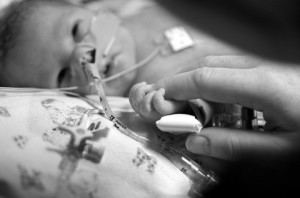Parents Blame Negligent Care for Daughter’s Brain Damage
 Hypoxic ischemic encephalopathy (HIE) with extensive brain injury is the subject of a recent medical malpractice claim brought against The United States of America. The complaint, which is pending in the United States District Court for the Western District of Washington, alleges obstetrical and nursing staff at the Madigan Army Medical Center provided negligent and substandard prenatal, delivery and labor care for the plaintiffs, who reside in Pierce County, Washington.
Hypoxic ischemic encephalopathy (HIE) with extensive brain injury is the subject of a recent medical malpractice claim brought against The United States of America. The complaint, which is pending in the United States District Court for the Western District of Washington, alleges obstetrical and nursing staff at the Madigan Army Medical Center provided negligent and substandard prenatal, delivery and labor care for the plaintiffs, who reside in Pierce County, Washington.
According to the lawsuit, the claimants have exhausted all of their administrative remedies and have satisfied the notice requirements of the Federal Tort Claim Act. They are now seeking monetary damages for their child’s birth injuries, related financial losses and pain and suffering, and are demanding a jury trial in lieu of arbitration.
Failure to perform an emergency C-section
In 2011, the plaintiff received pre-natal and neonatal care from health care providers at the Madigan Army Medical Center. The birth injury lawsuit states that the mother plaintiff clearly indicated her wishes to have a Caesarean section in the event the baby’s size or unforeseen labor problems could result in complications affecting the health of her child. Despite these desires, the plaintiff contends that she was still made to continue with a vaginal delivery.
The complaint states that after being admitted to the medical center in the early stages of labor on December 22, 2011, the plaintiff was given Pitocin to help augment contractions. Subsequent fetal heart monitoring suggested an abnormally high rate of contractions, but Pitocin administration was still continued. Following this, medical records indicated an increase in the fetal heart baseline along with intermittent late decelerations. Shortly thereafter, the mother developed a fever and was diagnosed with chorioamnionitis (a bacterial infection of the fetal membranes).
Labor complicated with shoulder dystocia
After several hours of prolonged labor, the plaintiff was finally able to push the baby’s head out of the perineum, at which point shoulder dystocia was noted. Shoulder dystocia is a complication in which the baby’s shoulder gets stuck in the birth canal, and is normally associated with larger sized babies.
Allegedly, a first year resident then unsuccessfully attempted to relieve the shoulder dystocia with downward pressure. Next, a third-year resident tried several maneuvers to free the baby’s shoulder, including the McRoberts maneuver, the Rubin maneuver and others. All were ineffective. At this point, contends the complaint, the attending obstetrician arrived and was able to successfully free the shoulder allowing for a vaginal delivery.
Baby suffers brachial plexus injury, brain trauma
Upon delivery, the plaintiff’s little girl was was described as having bruising on the face and scalp, a fractured right clavicle and Erb’s palsy. She was also hypotonic and experienced seizures. About five days after her birth an MRI revealed that the child showed hypoxic ischemic encephalopathy with extensive brain trauma.
The parents argue that as a direct and proximate result of the defendants’ negligence and failure to perform a C-section delivery, the minor child has incurred permanent physical, developmental, emotional, psychological and other injuries.
The birth injury lawsuit is demanding compensation to account for:
- Past, present and future medical costs that may include physical therapy, special education, occupational therapy and other necessary treatments
- Non-medical care and services such as home modifications
- Loss of earning capacity
- General damages to account for the child’s emotional and physical pain and suffering, and loss of enjoyment of life
- HealthIT, What is HIE? https://www.healthit.gov/providers-professionals/health-information-exchange/what-hie
- American Academy of Orthopedic Surgeons, Erb's Palsy (Brachial Plexus Birth Palsy) http://orthoinfo.aaos.org/topic.cfm?topic=a00077

 Resources
Resources
 Resources
Resources
